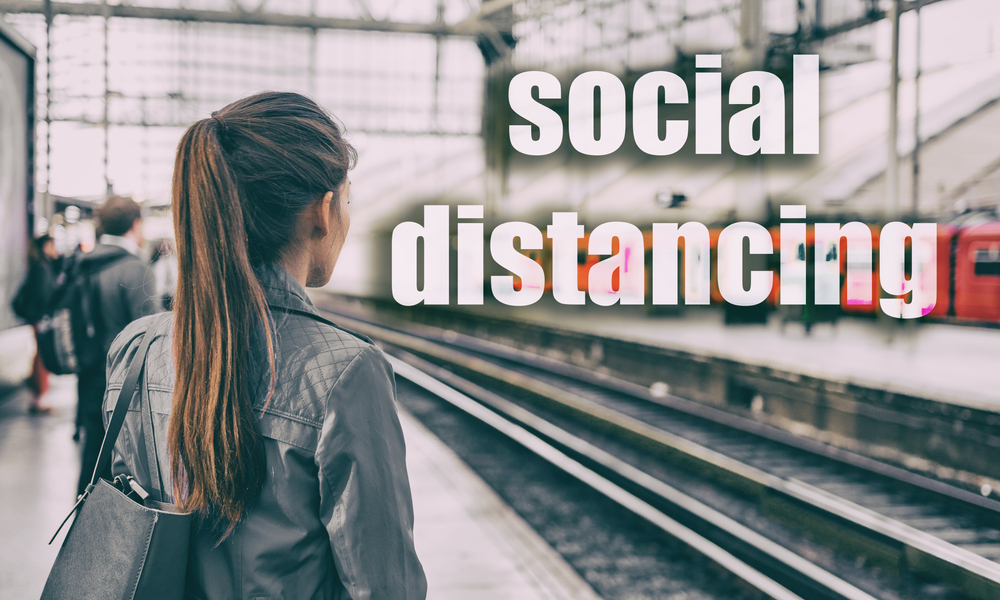
Covid-19 is primarily transmitted through respiratory droplets, which means people can be infected with the virus if they are in close proximity with an infected person. Social distancing is one of the precautionary measures put in place to curb the spread of COVID-19. People have been advised to keep social distancing between themselves and those outside their home. This strategy helps to flatten the curve and slow the spread of the virus to people who have not been infected. This article gives guidelines for social distancing during COVID-19 and how to stay connected while staying away.
Recommended Guidelines for Social Distancing
- Keep at Least 6 Feet Between Yourself and Others
According to the CDC, you are required to stay at least 6 feet from other people because the spread happens when droplets from an infected person are launched into the air and lands on people nearby. This can occur when the individual talks, coughs or sneezes, and the droplets can only travel over a short distance. Staying 6 feet away from other people reduces your chances of infection and prevents an infected person from spreading the virus to other people.
- Avoid Gathering in Groups
Now is not the time to hold gatherings at your friend’s house, restaurants, parks, or people outside your household. This includes both teens and younger adults since anyone can be infected with COVID-19. It is difficult to protect people in gatherings from getting infected and to identify persons who may have been exposed to the virus. Regardless of how small your gathering may be, you are likely to get infected from people who are already exposed but don’t show any signs of the infection.
- Stay Out of Crowded Places
Even though you may be taking necessary measures to keep social distancing, there are other ways you can get infected when you are out in public. COVID-19 is not only spread through direct contact but also through touching surfaces that are contaminated with the virus. You can easily get infected when you are finding your way through crowded places, because any touched objects can expose you to the virus.
- Work From Home When Possible
Working from home is another way you can practice social distancing as it limits your contact with the public. The CDC recommend working remotely as a way to flatten the curve. Many companies have asked their employees to work from home since there are many ways people can get infected in their workplaces. Doorknobs, computer keyboards, and other physical objects that can be touched can be contaminated with the virus. Businesses that cannot allow their employees to work from home have resorted to shutting down their premises as a restrictive measure by the Federal government.
- Avoid Using Any Kind of Public Transportation
The potential risk of infection on buses, taxis, trains, and other means of public transport depend on how crowded they are and how far you can keep yourself from other people. An open window can help contagious droplets dissipate faster when someone coughs or sneezes. Even if you are alone at the backseat of a taxi, there are still chances of being infected through the surfaces you touch such as the handles or pressing the button that controls the rear window.
- How to Stay Connected While Staying Away
Lack of social interaction can make you feel lonely, isolated, or depressed. It is important to reach out to other people for support if you are feeling this way since other people are struggling with the same feelings and are eager for a connection. You can take advantage of technology during this time by using your phone or video chat to keep in touch with your friends, loved ones, and distant family members. Routine chats with your loved ones can give your day a structure and give you something to look forward to. Just because we need to be physically distant during this time does not mean that we should be socially isolated. Reaching out to others and strengthening existing connections is crucial for your mental and emotional well-being.
Staying at home is one of the best ways to practice social distancing during the COVID-19 pandemic as it limits your contact with the public. While practicing social distancing, it is also important to take care of yourself by sanitizing and washing your hands regularly, disinfect frequently touched objects and surfaces, and maintain healthy lifestyle choices. These steps can help flatten the curve by keeping you safe from infection and preventing infected persons from transmitting the virus to other people.
